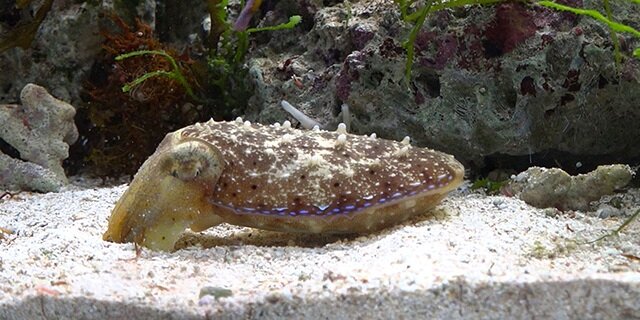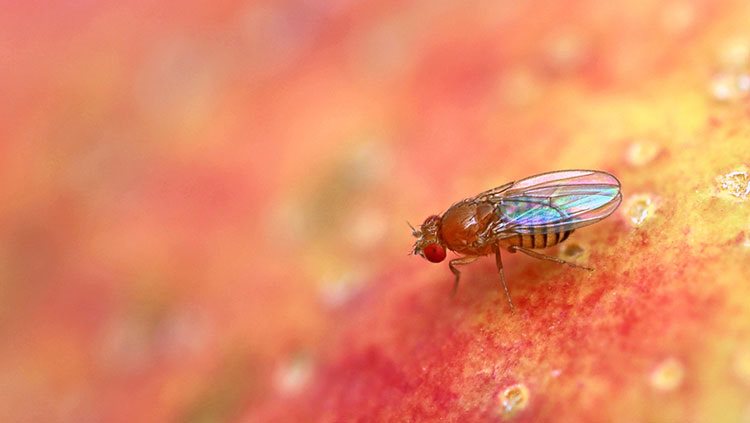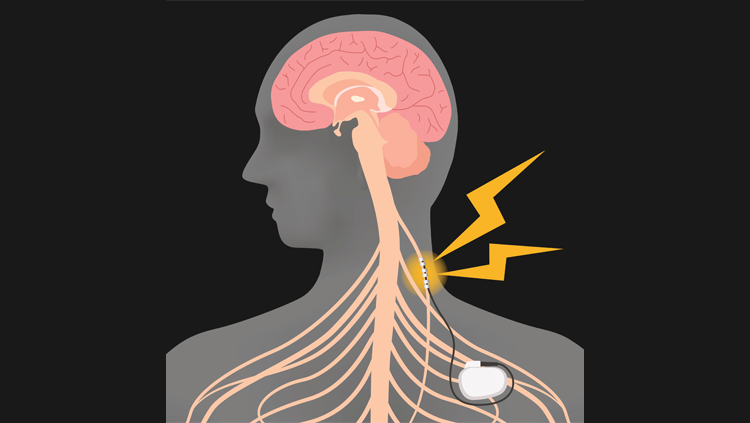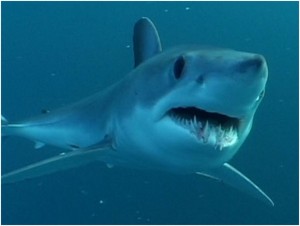
As the water warms in summer, beachgoers flock to the ocean and thoughts of “jaws” inevitably surface. A shark’s ability to home in on the scent of blood is legendary, but many people are surprised to learn that sharks have a stealthy sixth sense to find prey and explore the world around them. Sharks have the ability to sense an electric aura that surrounds all creatures in seawater--including people. This sixth sense works where vision fails, in murky water, at night, and when prey animals are buried under sand. This extra sense of perception (ESP) is called “electroreception.”
Human beings can only imagine what it must be like to “see” a world of electrical auras the way sharks do.
For 400 million years sharks and their relatives, the chimaeras and rays, have been using a force of nature that our species learned about only recently: electricity. And, sharks knew something about electricity that scientists never imagined until the 1970s: that all organisms in seawater are surrounded by a weak bioelectric field that pulsates and changes with the animal’s movements and physiological activity. With the surprising discovery of bioelectrical fields, a neuroanatomical mystery extending back to the 1600s was finally solved.
If you look closely at the head of any shark or ray you will see that it is stippled with small pores focused around the mouth. The first person to have examined a shark must have seen them, but what are they?
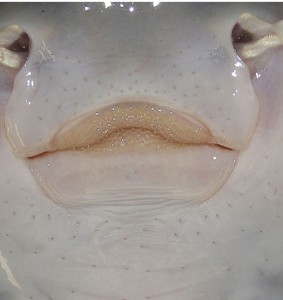
In 1678, anatomist Stephano Lorenzini guessed that they might be the openings of glands to coat the fish with slime. Squeezing the pores does expel a crystalline jelly substance. But this doesn’t seem quite right. Sharks are not slimy. In fact, the clear gel inside the pores does not resemble any bodily secretion. Lorenzini had second thoughts. Writing by candle light centuries before electricity was discovered, he wrote in his notebook that these mysterious openings must have some hidden function; thus calling on scientists of the future to solve this puzzle of Nature.
If the shark’s skin is peeled away carefully you will see that the pores are openings of long clear tubes, some nearly the diameter of a spaghetti noodle and in some cases nearly as long, but most are much smaller. The tube ends in a swelling somewhat like an eyedropper bulb. A slender nerve trails out of the end of the swollen ending. This structure reminded anatomists of Roman long-necked flasks, called ampulla, so these strange tubes found only under the skin of sharks and their close relatives became known as “ampullae of Lorenzini.”
Anatomists tracing the nerves from the ampulla saw that they entered the brain through the top side or dorsal surface. This vital clue meant that ampullae of Lorenzini are sense organs, not glands, because sensory input to the brain – touch, temperature, pain, etc., enters through the dorsal side of the spinal cord, whereas nerves that control muscles exit from the ventral (bottom) side of the brain and spinal cord. But what sense could these strange tubes, unlike any other sense organ in any other animal, possibly detect?
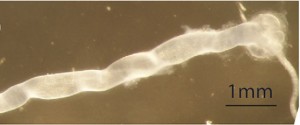
Soon after the electronic amplifier was developed early in the 20th century, physiologists began to use them to detect the weak electrical impulses traveling through nerves. Alexander Sand in 1938 found that when he amplified the signals sent out the nerves of the ampullae of Lorenzini the impulses changed their rate of firing depending on the temperature. The organs were extremely sensitive “thermometers,” detecting changes in temperature as small as 0.2 degrees C. Thus, these organs must allow sharks to detect small temperature differences in seawater.
But when R.W. Murray was repeating Sand’s experiments in the 1960s, he accidentally switched on an electrical stimulator and the ampullae of Lorenzini responded by firing a burst of electrical impulses down the nerve. Startled by this discovery, he did further tests and found that the organs were remarkably sensitive “voltmeters.” Astonishingly they were more sensitive to weak electric fields than all but the most sensitive electrical instruments available to measure voltage.
Further research by Murray and others showed that gently touching the ampullae also caused nerve impulses to fire, and that the salt concentration and pH of a solution applied to the openings also stimulated nerve impulses in the organs. Now neuroscientists faced a difficult question: How is it possible to know which of these stimuli is the natural stimulus for these sense organs? Touch, taste (salt and pH), and temperature are common senses, but other animals cannot sense such weak electricity. Is it possible that these creatures have a 6th sense that other animals do not have? But if the ampullae of Lorenzini were “voltmeters,” why would a shark have sense organs to detect electricity?
The answer came in the 1970s when neuroscientist Adrianus Kalmijn made a surprising discovery. Using very sensitive electronic instruments he found that all animals in seawater have a very weak electrical field surrounding their body. Further behavioral experiments showed that sharks could locate prey by sensing the fish’s bioelectric field, even when hidden beneath the sand. Moreover, electrodes buried in the sand that emitted weak bioelectric fields just like those surrounding any fish, provoked the shark to attack just as if the electrodes were a hidden prey item. This proved that the sense organs were indeed used by sharks in a normal behavior (feeding) to detect weak electric fields.
This bioelectric aura is not mysterious. It is generated just like electricity is produced in an electric battery. When positive and negatively charged ions in a solution are separated by a barrier, the imbalance in charges in the two compartments creates a voltage, simply because positive and negative charges attract. If there is not an equal balance of charges on both sides of the barrier, a small voltage will be created. In animals the barrier of separation is the animal’s skin and the two different salt solutions are the salty ocean outside the skin and the somewhat different salts in body fluids. This creates an extremely weak voltage, but ampullae of Lorenzini are so sensitive, they could detect whether or not a 1.5 V flashlight battery connected across the distance of the Atlantic Ocean was switched on or off.
In research on electroreception studying blue sharks at sea near the Woods Hole Oceanographic Institution, my colleagues and I observed that sharks would follow the scent of bait (ground-up fish that we pumped through a tube), but in the last moment of attack electroreception would take over and the shark would bite electrodes emitting a weak electric field placed a meter away from the food source. This revealed that surprisingly, electroreception is the most important sense a shark uses to orient its jaws in the final moments of attack, even overriding the scent and smell of blood.
I don’t believe that a shark repellent can be made to stop a shark in a feeding frenzy, but from these experiments I can see how we might use electroreception to avoid being attacked by sharks. By trailing a slender wire behind a swimmer or surfer emitting a weak electric field, the shark would attack the decoy electrode instead of chomping down on its intended meal. Like lizards escaping a predator by dropping its tail as a decoy, the electrical decoy could be life-saving.
Interestingly, in 2003, physicists temporarily and mistakenly revived the long-discarded theory that ampullae of Lorenzini are temperature receptors. This was based on an experiment in which they squeezed out some of the clear gel from the ampullae of Lorenzini onto a microscope slide. The researchers put the two electrodes from their sensitive voltmeter into the gel and heated or cooled one end and discovered that a voltage was generated. What they overlooked was something sharks know well. Metal in contact with a salt solution creates a battery, and the probes of the voltmeter were metal. As everyone knows, the amount of voltage a battery generates depends on temperature. In reality, the salty gel inside the tubes is just a good electrical conductor. It does not generate electricity. The gel conducts the voltage through the tubes acting like an antenna to collect the bioelectrical signals and send them to voltage sensing cells in the bulb-like ending of the organ.
This also explains why so many different kinds of stimuli affected ampullae of Lorenzini. This happens because voltages are affected by very many factors. This also illustrates how rich the sense of electroreception must be. Salt concentration, temperature, pH, and many other factors will affect the bioelectric field surrounding an animal, just as light reflects differently from many different kinds of surfaces, giving us great insight into properties of different materials that we see. Sharks must be able to learn a great deal about the world from their sense of electroreception.
Experiments using food to study shark behavior can lead to an overly simplistic view of the purpose of ampullae of Lorenzini. Like vision or hearing, electroreception does not exist for only one purpose. Electroreception provides sharks with a unique and very sophisticated means of analyzing the world around them. We humans can only imagine what it must be like to see the world through a strange sixth sense.
More to explore
Fields, R.D. (2007) The shark’s electric sense. Scientific American, August, p. 75-81.
Fields, R.D., Fields, K.D., and Fields, M.C. (2007) Semiconductor gel in shark sense organs? Neuroscience Letters, 426, 166-170.
CONTENT PROVIDED BY
BrainFacts/SfN




